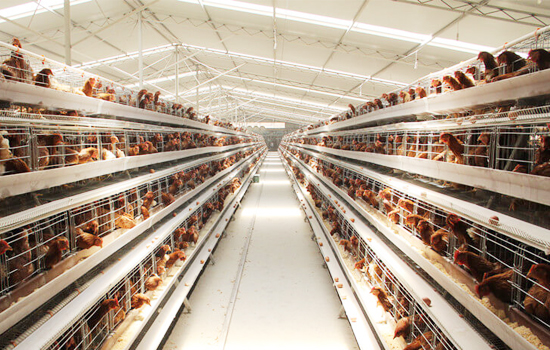Chicken cage manufacturers remind everyone to make daily observations
- font size decrease font size increase font size
Many farmers ignore the daily observation of chickens when they use chicken cages to raise chickens. Many manufacturers that chicken cage for sale will remind everyone to make daily observations
The first is the observation of the color of the comb. The bright red color of the comb and wattles is a sign of chicken health. White indicates that the body has been consumed too much. The chickens shed feathers all over, but there are no feathers in the coop, indicating that they were eaten by other chickens. This is caused by lack of sulfur or amino acids in the chicken body, so gypsum or amino acids should be supplemented. If the chickens have dull feathers at the end of moulting, before and at the beginning of labor, they should be fed some high-cholesterol feed.
Also observe some of the appetite of the chickens in the chicken cage. A strong appetite indicates that the physiological condition of the chicken is normal, healthy and disease-free. The loss of appetite is generally caused by factors such as sudden changes in feed, observation of breeder replacement, and frightened observation of flocks. Pica is mostly caused by insufficient feed nutrition, especially mineral and trace element deficiency. Picky eaters are caused by improper feed mix and poor palatability under observation.

Healthy chicken flocks are lively, responsive, and have a crisp cry. Chickens are depressed, standing with their eyes closed, observing disheveled feathers, observing drooping wings, observing sound breathing, etc. are signs of onset or are in the early stage of onset. During the laying period, after turning off the lights at night, pay attention to observe whether the breathing of the chickens is normal.
It is normal for the feces to be gray in the chicken house. Usually gray feces are covered with a layer of white feces, the amount of which can measure the level of protein content in the feed and the level of absorption.
Healthy chicken feathers grow well, clean and bright, brightly colored, and close to the body. Fluffy feathers, drooping wings, filthy, unclean, and tarnished are manifestations of chronic malnutrition. The feathers are standing upright, which is a manifestation of high fever and chills. Feather shedding and baldness observed are common in vitamin A deficiency, trichotillomania or parasitic diseases on the body surface.
In general, except for hot weather, normal chickens will not breathe with their mouth open. If it is found that the chicken is breathing, observing panting, coughing, snoring, sneezing, shaking the head and stretching the neck, observing the nose swinging, it should be considered that the chicken has a cold or avian flu, observing infectious laryngotracheitis, and observing infectivity Bronchitis, observation of infectious rhinitis, observation of chicken respiratory mycoplasmosis.

